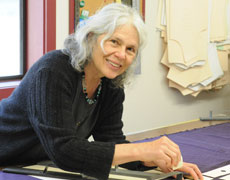How the sewing machine empowered African women
Posted by Rose on 9th Mar 2022
Although sewing machines were at first a tool of colonialism in Africa, a century later, in part due to women, they became tools of democratization.
As part of Sympatico’s celebration of Women’s History Month, here’s the second installment. Last week we looked at how African wax print textiles have their origins in Southeast Asia. This week I’ll highlight the role sewing machines and artisanal clothing makers have played in the economic and political democratization of Africa.

My interest with the impact of sewing machines in Africa was spurred last year by a post on Goats and Soda, NPR’s global health and development blog. The story was occasioned by the publication of The African Lookbook - A Visual History of 100 Years of African Women.
In this fascinating book, author Catherine McKinley explores how African women were portrayed visually in the colonial era and how they present themselves today. She told NPR in an interview, "I have looked at photography over time — and in the colonial lens, there was always a deliberate effort to make African women look ugly. Photos such as puberty rites photos: It's almost like colonialists took the most abject, most degraded girls and put them up for entertainment."

By the mid-century, sewing machines were a fixture in many African homes and often were the launchpad for women entrepreneurs. (The McKinley Collection)
As an African American woman McKinley feels an intimate connection with the images she has pored over. As she explains, at first sewing machines were available to colonialists and their tailors. These machines were also used to piece together indigenous cloth that would then be used in exchange for captives bound for trans-Atlantic slave commerce. Despite this dark beginning, sewing machines did infiltrate African homes—at least those with some means. Quickly, African women recognized the potential for economic advancement the machines represented. They, along with male tailors, began to produce artisanal clothing for for family, friends, and in trade.
A factoid McKinley unearthed is that during the 1960s, women were spending 12 - 19 percent of their income on fabric. Like gold adornments in other cultures, bolts of fabric were seen as a viable way to accumulate and store wealth. And indeed, fabric in Africa was treated as a very precious commodity. So precious that clothing making often involves little or no cutting. Extra cloth is folded inside so as to “preserve the yard.” A complex trading economy has sprung up among women in West Africa with fabrics as the central commodity and women traders as the primary players.
Looking to the future, McKinley sees enormous potential in Africa for fashion entrepreneurs. She notes that German and Japanese apparel technology is arriving in countries like Ghana where it could spur a new indigenous clothing market. The big hurdle is ironically the result of this same technology, which floods Africa with secondhand clothing mass-produced elsewhere in the developing world.

Me, in solidarity with stitchers around the world.
Stay tuned later when we’ll explore a United Nations project to empower the women of Niger, in which the sewing machine is a critical element.
Share:





